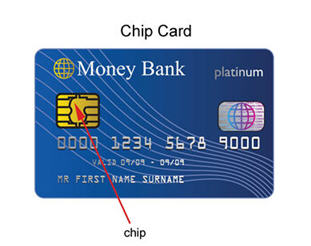
Cards with a chip in them, called "chip cards," must be inserted into the chip card reader and left in the reader for the entire transaction. The terminal will display the REMOVE CARD prompt when it is time to remove the chip card from the chip card reader.
Chip cards can be customized by the card issuer to have different applications and methods of verifying the cardholder; therefore, different chip cards may have different prompts: Some prompt for a PIN (like a debit card), others print a signature line on the receipt (like a stripe credit card) for the cardholder to sign.
If the chip card prompts for a PIN, the cardholder must key in their PIN. If the PIN is incorrect, the cardholder will be prompted to retry.
If the transaction cannot be completed with the chip card, request another form of payment, and tell the cardholder to contact the card issuer.
As a best practice, always look for "VERIFIED BY PIN" on the Merchant copy of the receipt:
If "VERIFIED BY PIN" appears, no signature is required.
If a signature line appears, the cardholder must sign the receipt.
Every time a cardholder presents a card (debit or credit) for payment:

There are five basic steps to performing a transaction with a chip card.
1. Begin the transaction, and follow the prompts.
2. Check for the chip on the credit or debit card every time a cardholder presents a card for payment.

3. If the card has a chip: When the SWIPE OR INSERT CARD prompt appears, insert the chip card into the chip card reader. Make sure that the card is facing up (the chip on the visible front side), and the chip-end of the card is inserted into the reader first. Leave the card in the reader for the entire transaction.
4. Follow the prompts, and have the cardholder follow their prompts.
5. Remove the chip card when the REMOVE CARD prompt appears. The terminal will beep if the chip card is left in the chip card reader after the transaction is completed.